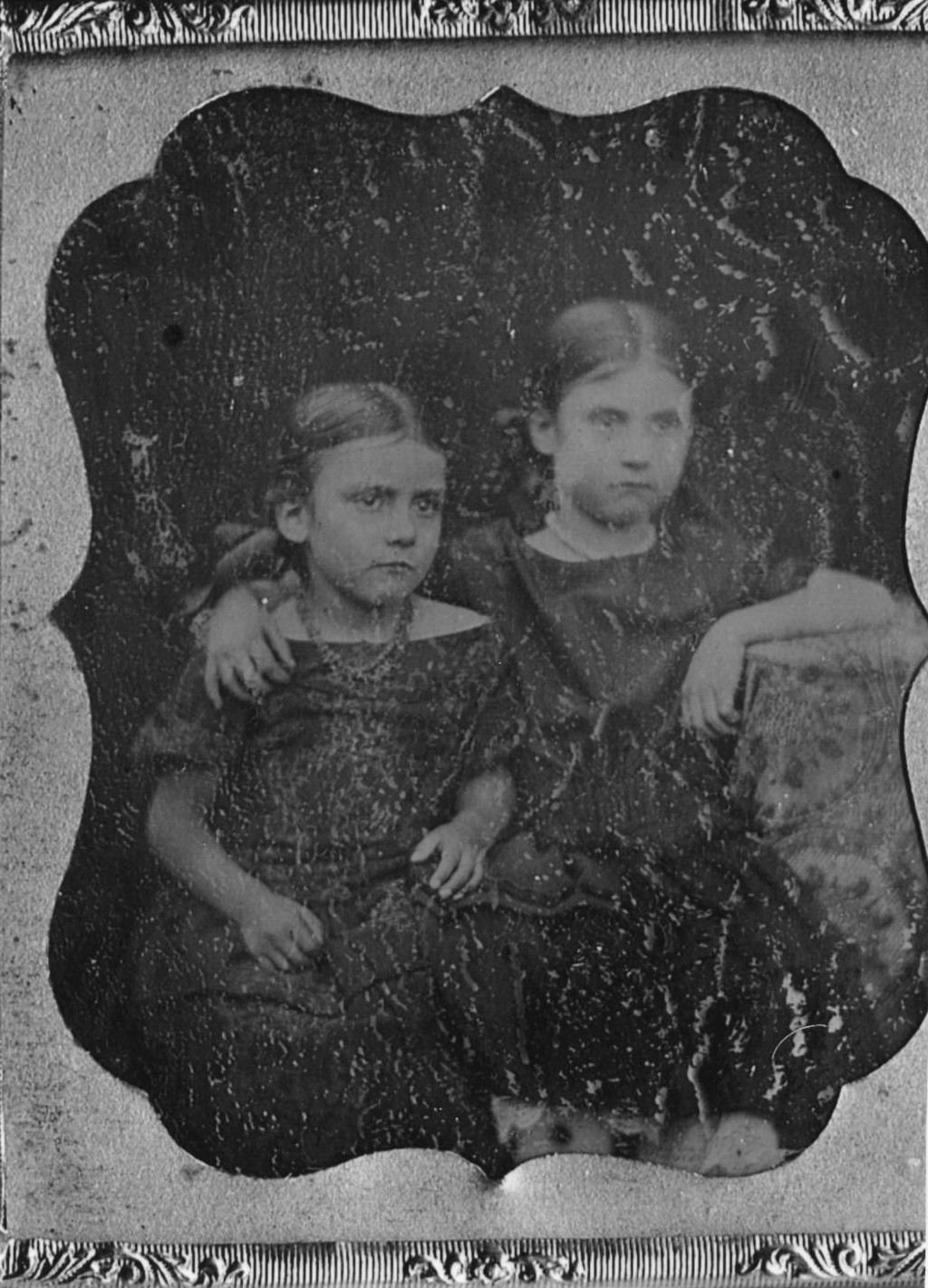
Mary Ann (left) and Margaret Hutcheon (right) circa 1859.
| Amy Louisa Hutcheon's Sisters - Mary Ann and Margaret |
 |
|
Mary Ann (left) and Margaret Hutcheon (right) circa 1859. |
|
Margaret Jane Burns Hutcheon, the elder of the two little girls shown above, was born on February 7, 1852 and christened February 19, 1852. Margaret Serzans reported that she died at the age of 7 on December 23, 1859. Mary Ann, the younger girl, was born December 20th, 1853 and christened January 6, 1854. She died on October 23, 1859 at the age of 5. Both girls died of Scarlatina, now known as Scarlet Fever. Generally, this child's disease is presented with a fever, sore throat, swollen glands, and bright red rash. Scarlet Fever was first distinctively identified in 1685 - for a long time, it was considered a form of Measles. It is endemic in all the large cities of the world and epidemics of varying severity have visited Europe and America from time to time. A vaccine was developed for the contagious disease in 1924, and currently penicillin is used effectively to treat it. Bacteriologists have searched in vain for the source of the disease. All that we know positively is, that there is a specific infection, that it is volatile, minutely divisible, and diffused so quickly that it spreads from one to another rapidly. The infection is found in the expired air, the secretions and in the epidermis. It fastens itself upon the clothing, furniture, drapery, toys, letters, flowers, hair, in fact anything animate or inanimate that comes in contact with it. All that seems necessary to contract the disease is to come in contact, for ever so brief a period, with the impregnated air or body upon which the infection is found. The symptoms of scarlet fever depend largely upon the form or variety. In some cases the disease is so mild as to require considerable skill in recognizing it, while in others it will be so severe as to destroy life in thirty-six or forty-eight hours. This great diversity of symptoms has led authors to divide the disease into three varieties: Scarlatina Simplex; Scarlatina Anginosa; and Scarlatina Maligna. The invasion of the disease is sudden. Frequently the chill is the first evidence, followed by a high fever, and very grave symptoms are present in a few hours. Again in highly sensitive children a convulsion will mark the beginning of the disease. Either case is usually accompanied by vomiting. The pulse is very rapid, the temperature rapidly increases, and the child complains of great heat, which is pungent in character. |
 |
|
Some seasons, for reasons unaccountable, scarlet fever appears in a malignant form. Such an epidemic occurred in the winter of 1879 in the little village of Harrison, Ohio, nearly every case resulting fatally. In the malignant form, the child is suddenly stricken; the chill is short and the febrile reaction extreme. The skin is intensely hot, dry, and pungent; the mouth is dry and parched; the eyes are brilliant and burning; the face is turgid; the head is hot and painful; the throat becomes dry, tumid, and swollen; the patient is restless and delirium early ensues. There is nausea and vomiting of a persistent character; convulsions are the rule. Within twenty-four hours the intense excitement gives away to stupor. The child lies with the eyes partly open, the pupils are dilated, the surface seems dusky and swollen, the temperature reaches 104° to 105°, the pulse ranges from 160 to 170 beats per minute, and within thirty-six to forty-eight hours death ends the scene. Sources Margaret Serzans Letter from Margaret Herald to Harry Latta Wighton in 1953 Various web sites, including: Scarlet Fever: http://www.henriettesherbal.com/eclectic/thomas/scarlatina.html |